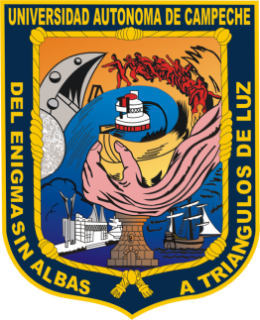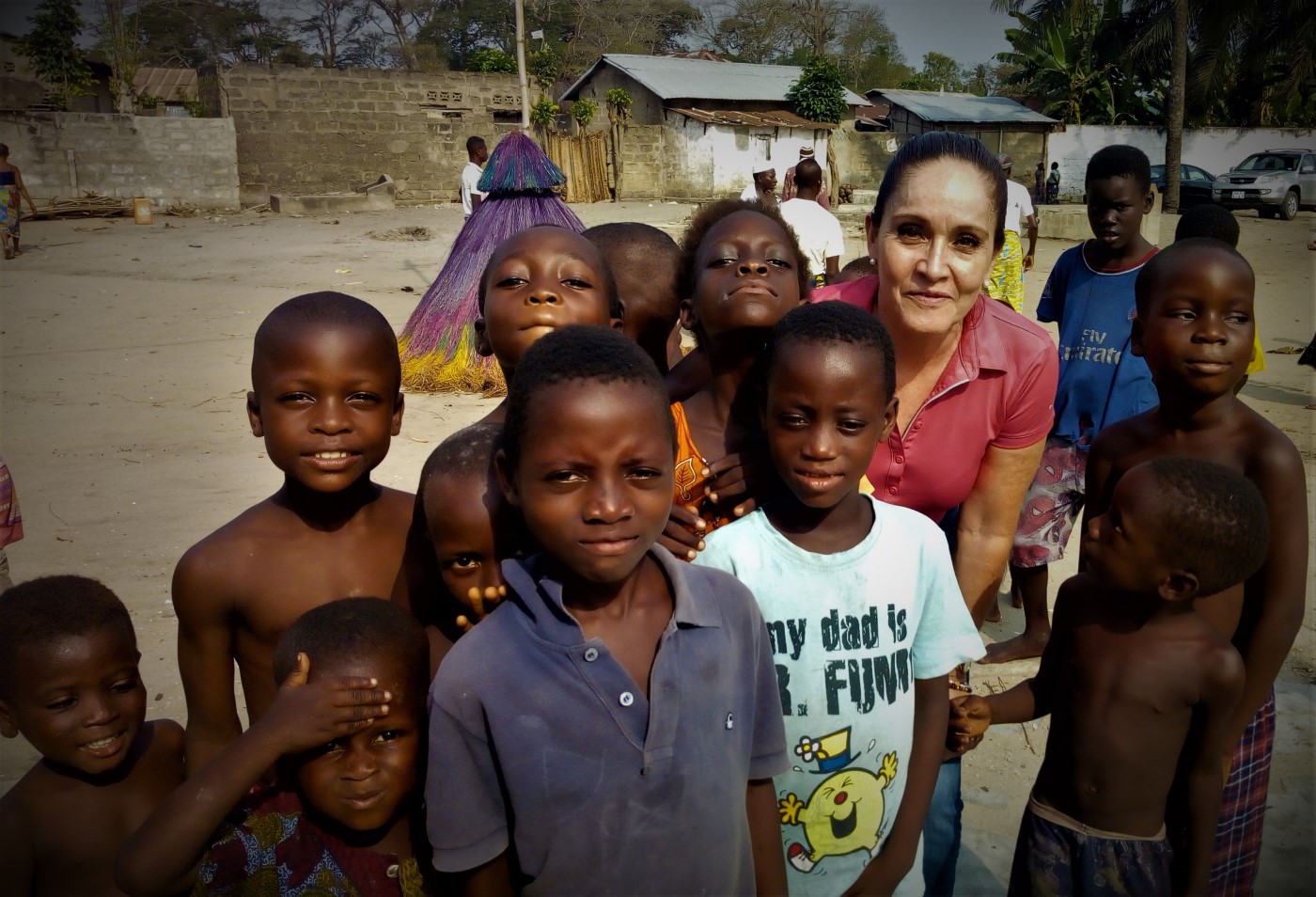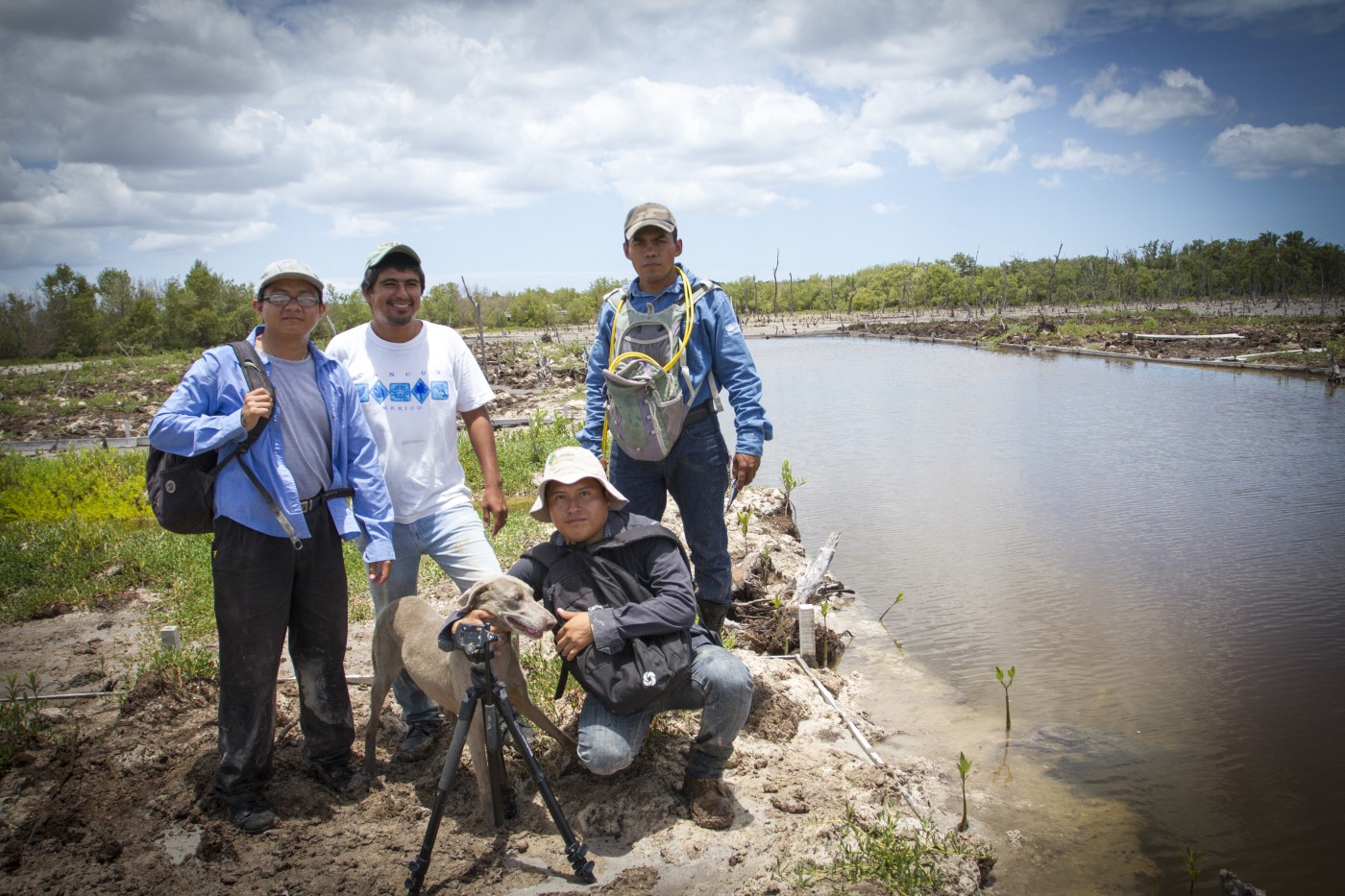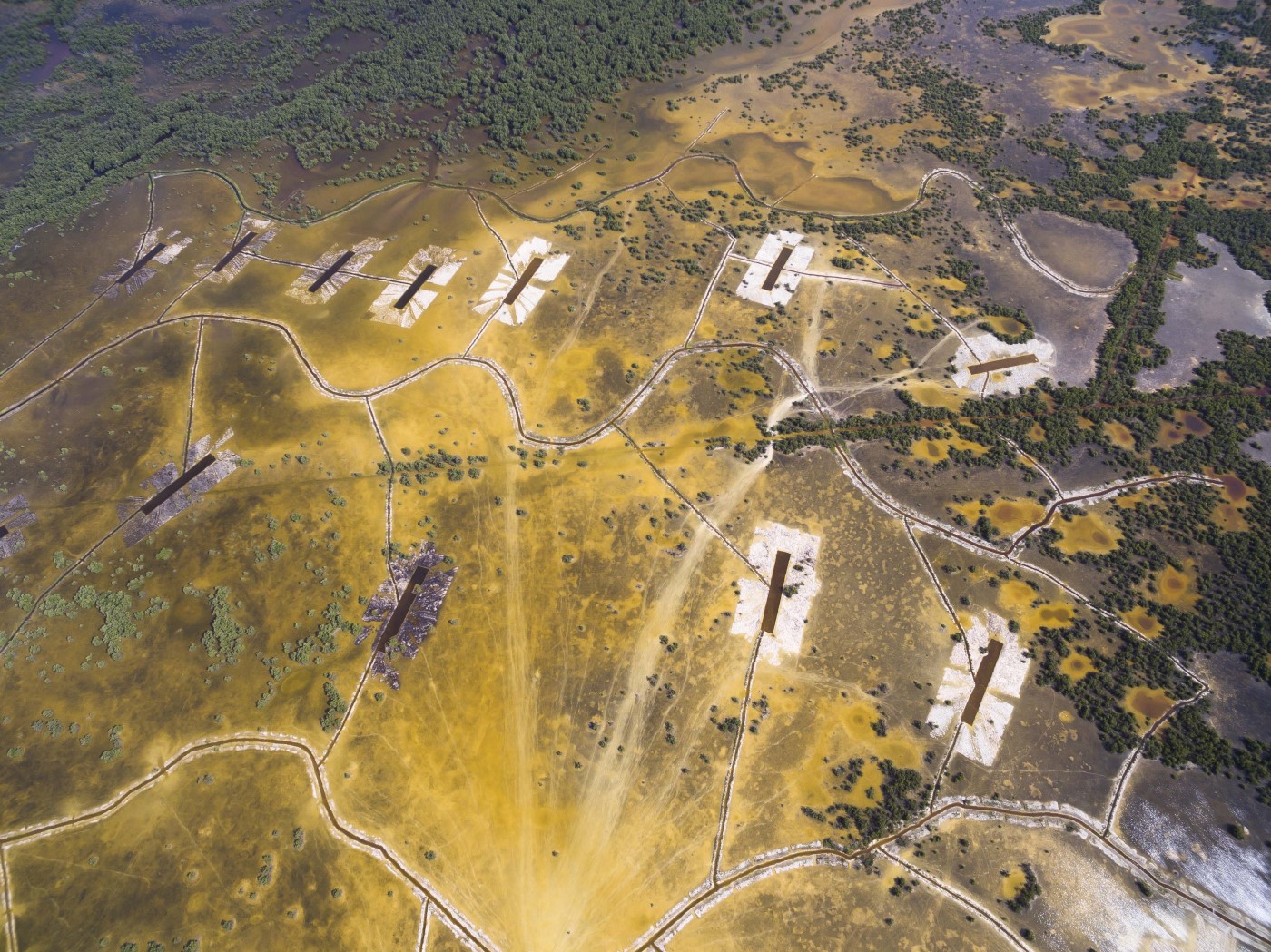Welcome
The Coastal Wetlands Laboratory with specialty in Mangrove (CWLSM), belongs to the EPOMEX Institute (Universidad Autónoma de Campeche). In this Institute, research projects are developed focused on the following topics:
- Ecological Restoration.
- Diagnosis and evaluation of environmental impact.
- Studies of degree of conservation.
- Vulnerability and resilience..
- Biomass and carbon sequestration.
- Climate variability.
- Dendrochronology.
All this in order to define management instruments that support the allocation of environmental policies. Likewise, in the CWLSM, methodologies are implemented to increase the success in ecological restoration projects, in addition to performing small and large scale restorations, through hydrological management (models), sediment dynamics, physicochemical analysis, and ecophysiological responses, including the Socioeconomic component. Similarly, research is carried out aimed at exploring the genetic potential and studies on the effect of climatic variability in wetlands, analyzing greenhouse gas emissions and the behavior of biomolecules.
Institutional Development
To develop and transfer technology on restoration, greenhouse gas emissions and carbon sequestration in coastal wetlands, several national and international research projects have been carried out for 17 years, which have contributed to consolidate the infrastructure of the Coastal Wetlands Laboratory with emphasis on Mangrove Ecosystems (LHCEM). This through the creation of three areas of work, and with the acquisition of specialized equipment; executing the assembly of methods in soil, water, vegetable tissue; and currently, we are working on the implementation of the phytohormone method in the different mangrove species through a mass chromatograph; as well as, with the optimization, precision, accuracy and reproducibility of each analysis.
It should be noted that there are few laboratories and researchers in the country; in addition to few researchers that concentrate the infrastructure required for the multifactorial environmental and physiological interpretation of coastal wetlands, especially in mangroves. Therefore, the main objective of the LHCEM is to establish and execute management strategies with the least effect on the natural environment, for the conservation and implementation of the most appropriate restoration by region and coastal wetland.
Laboratories
The LHCEM, is equipped with infrastructure for the study of coastal wetlands, has three areas:
In these areas, samples are analyzed to develop diagnostics and environmental impact assessments; as well as the definition of the degree of conservation, vulnerability and resilience. This, in order to define management instruments to assign environmental policies. As well as, the application of ecological restoration on a large scale, through hydrological management (models), sediment dynamics and physiological responses; in addition to research focused on the exploration of genetic potential and studies on the physiological effects derived from climatic variability in wetlands and carbon capture and greenhouse gas emissions in mangrove ecosystems. The above, through high-level scientific infrastructure; such as, gas, mass and ion chromatography, X-ray fluorescence, elemental analysis and Data logger for the elaboration of hydrological models, and multiparametric for the in situ determination of physicochemical parameters of water.
Projects
Coastal wetlands include a wide variety of habitats - mangrove forests, swamps, peat bogs, floodplains, rivers, lakes, etc. coastal areas and marine areas- whose depth at low tide does not exceed six meters (Ramsar, 2010). Specifically, mangrove ecosystems are recognized as those arboreal or shrubby vegetation that is located in the tidal zone, in the ecotone between the sea and the land of tropical and subtropical regions (Flores-Verdugo, 1989). The mangrove is a facultative halophyte plant, with physiological adaptations that allow it to ultrafiltrate, exclude, excrete or accumulate salts, which facilitates its growth in fresh, brackish or marine water; such is the case of Rhizophora mangle species L. (red mangrove), which develops under conditions of oligohaline to mesohaline (0 to 25 ups), Laguncularia racemosa (L.) Gaert. F. (white mangrove), from oligohaline to mesohaline (0-25 ups), Conocarpus erectus L. and the variety C. erectus L. var. DC sericeus, under conditions from mesohaline conditions to hyperhalines (5 to 120 ups) (Agraz Hernández et al., 2006) andAvicennia germinans (L.) L. (black mangrove), under mesohaline to hyperhaline conditions (25 to 70 ups), according to De la Lanza-Espino and Cáceres-Martínez, 1994). In addition to what has been described, it grows in oxygen-poor soils and flood zones due to tides, fluvial contributions or the water table (Agraz-Hernández et al., 2007a).
The degree of structural development of the mangrove forests, as well as the distribution of the different species, will be determined by several factors, among which stand out the type of climate, availability of fresh water and terrigenous nutrients, the rate of recycling of these, tidal flows, frequency and periods of flood, microtopographic levels, physical and chemical characteristics of the sediment and interstitial water. As well as, the frequency of hurricanes, the presence or absence of parasites and diseases, wave energy, forest age and the concentration of pollutants or waste and physical damage of human activities (Odum et al., 1982). According to FAO, by 1980 mangroves represented an area of 19.8 million hectares worldwide. However, this same institution reported losses of 23.3% in mangrove cover in the last 25 years for the year 2005 (FAO, 2007a). With this in mind, many countries established as a priority, strategies for good use, within the government administration (Lacerda and Schaeffer, 1999, Lugo, 2002).
Based on the above, in the last 17 years the LHCEM has focused its attention on issues related to environmental diagnostics, restoration, emissions of greenhouse gases and carbon sequestration; developing more than 65 projects at a national and international level, with different and highly recognized institutions; such as, CONANP, CONABIO, CCG, CFE, FONATUR, FOUNDATION NEOTROPIC-COSTA RICA, FOUNDATION-CORDE-AFRICA-BENIN, among others.
2022
- Comprehensive restoration and recovery program of the carbon stock in sites with different restoration processes (2019-2023).
- Restoration, conservation and sustainable management of the mangroves of Costa Rica and Benin in the face of climate change "(2017-2023) Financing: Fonds Français pour l'Environnement Mondial.
- Ecological restoration in the mangrove ecosystem in the area surrounding the conservation communication and culture center (CCCC), Jaina Island, through the use of hydrodynamic circulation models in the municipality of Hecelchakán, Campeche in 517 hectares STAGE II "(2017- 2022) Financing: National Forestry Commission.
- Hydrobiogeochemical Greenhouse Experiment and Climate Change
2021
- Long-term monitoring of carbon and the effects of climate variation on preserved and restored mangroves in the municipality (2018-2021)
- PROGRAM THAT SUPPORTS THE CONSERVATION AND ECOLOGICAL RESTORATION OF COASTAL WETLANDS IN CENTRAL AMERICA (2019-2021)
- Application of Variability Analysis and transcriptomic response to different stresses in populations (2017-2021).
2020
- Environmental diagnosis of the conservation and identification of potential areas for the restoration of the mangroves of the Gulf of Fonseca (2020).
2019
- Global change and sustainability in the Usumacinta river basin and marine area of influence. Bases for adaptation to climate change from science and land management ”(2017-2019). In collaboration with the Gulf of Mexico Center for Global Change and Sustainability. Financing: National Council of Science and Technology.
2018
- Implementation of prevention, mitigation and compensation measures to be implemented to comply with the authorizations regarding the environmental impact of the extension of the right of way of the LT Escárcega potencia - Xpujil and construction of the LT Xpujil - Xul Há "(2016-2018 Financing: Federal Electricity Commission.
2017
- Blue carbon in coastal environments of Mexico "(collaboration in the chapter: Laguna de Términos in the area of restoration and Marshlands) (2017) Collaboration with UNAM Financing: National Council of Science and Technology.
2016
- Estimation of the amount of carbon and nitrogen sequestered and methane emitted in mangrove sediments (2016-2018).
2015
- Study of the possible environmental impact on the mangrove ecosystem due to the operation of the Las Cruces hydroelectric project (2015). Financing: Federal Electricity Commission.
- Restoration of 10 hectares in a degraded mangrove area of the Petenes Biosphere Reserve, Campeche (2015-2016).
- Phenological response of the mangroves of the littoral of Campeche to chemical changes of interstitial water (2015-2016).
2014
- Morphophysiological response of the mangrove to the change of the Environmental Conditions and Emissions of Methane (2014-2016).
- Environmental monitoring program for the modernization of the Puerto Real-Carmen transmission line (2014-2016). Financing: Federal Electricity Commission.
- Technical Justification Study for the Extension of the Right of Way of the Transmission Line Escárcega Power-Xpujil (2014-2015). Financing: Federal Electricity Commission.
- Clinal Variation and Chromosome Characterization of Rhizophora mangle in the Litoral de Campeche and its relationship with the Environmental conditions (2014-2015).
2013
- Critical Factors in Structure and Function (2013-2014).
2012
- Ecological restoration in the mangrove ecosystem in the area adjacent to the center of communication and culture of conservation (CCCC) Jaina Island, through the use of models of hydrodynamic circulation in the municipality of Hecelchakán, Campeche in 600 ha. STAGE I (2012-2016). Financing: National Forestry Commission.
- Regional program for the characterization and monitoring of mangrove ecosystems in the Gulf of Mexico and the Mexican Caribbean: start of a multi-institutional network. Campeche. Second Stage (2012-2016). Financing: National Commission for the Knowledge and Use of Biodiversity.
- Center for Scientific Dissemination on Wetlands "EL FENIX" (2012-2015).
2010
- Studies for the Restoration of Mangroves located in Cancún, Quintana Roo and Ixtapa, Guerrero (2010-2013). Financing: National Fund for Tourism Promotion.
- Mangrove ecosystems in the state of Campeche: Diagnosis of Conservation and Identification of potential areas for the Fomix-Campeche Restoration (2010-2013). Financing: National Council of Science and Technology.
2009
- Hydrological rehabilitation and environmental diagnosis of the mangrove ecosystem in the area of Playa de la Comunidad de Petacalco, Guerrero (2009-2012).
- Reforestation of 2.0 ha of the areas surrounding the coal ash deposit project beach area in CT President Plutarco Elías Calles in Plutarco, Guerrero (2009-2012).
- Reprint of the work: "between the Sea and the Earth" (2009-2010).
- Mangrove study for the manifestation of environmental impact modality of PH Las Cruces (2009). Financing: Federal Electricity Commission (CFE).
2008
- Regional Program for the Characterization and Monitoring of the Mangrove Ecosystem of the Gulf of Mexico Mexican Caribbean: Campeche (2008-2013). Financing: National Commission for the Knowledge and Use of Biodiversity.
- Environmental diagnosis of the mangrove ecosystem and aquatic vegetation submerged in the lagoon systems of Salinas, Chacahua, Pastoría, and the mouth of the Verde River, Mexico (2008-2011).
- Proposals for Hydrological Rehabilitation of the Laguna System of Salinas, Chacahua, Pastories and the mouth of the Verde River, Oaxaca, for the Conservation and Restoration of the Mangrove Ecosystem through numerical models (2008).
- Reforestation of 7 hectares with mangrove to the north of the Laguna de Términos, Campeche, (2008-2010).
- CONAFOR-UNITED KINGDOM Regional action plan for the restoration of the mangrove in Nayarit (PARRMN) of the San Pedro River Basin and the National Marshlands (2008-2009).
- Accumulative Environmental Impact Assessment (IAA) and Restoration of Mangrove Ecosystems. Funded by the Institute of Marine Sciences and Limnology. UNAM (2008-2009).
2007
- Basic level dissemination and technology transfer for the conservation and restoration of the most productive forest ecosystems of the Biosphere (2007-2008).
- Application of mangrove seedlings as alternatives for the conservation of coastal ecosystems in the Campeche probe: afforestation and phytoremediation (2007-2008).
- Criteria and Techniques for the Reforestation / Afforestation with Mangrove programs (2007).
2006
- Application in transfers and adoption of technologies by the Center for Ecology, Fisheries and Oceanography of the Gulf of Mexico (2006-2007).
- Training by the Center for Ecology, Fisheries and Oceanography of the Gulf of Mexico "(2006-2007)
- Evaluation of the methodology for the gathering of information in the field for the National Inventory of Wetlands requested by the National Institute of Ecology, of which you are responsible for the chapter of wetlands of the state of Campeche (2006).
- Implementation of restoration techniques for mangrove ecosystems north of the Laguna de Términos, Campeche (2006).
- Feasibility report for the construction of the construction project for the "Laguna de Términos Sabancuy II-Puerto Real"(2006).
2005
- Basic guidelines for restoration programs, sustained management and characterization of the toxic effects of oil in mangrove seedlings (2005-2007).
2004
- Reforestation and Monitoring of 17.5 ha. in a mangrove ecosystem north of the Laguna de Términos, Campeche (2004-2009).
- Environmental diagnosis of the mangrove ecosystem in the Nipchupte-Bojorquez lagoon system, Cancún. Q. Roo. (2004-2009).
2003
- Collaboration. Genetic analyzes of microbial commiunities and evaluation of the antimicrobial activity associated to the rhizosphere of Thalassia testudinium Konig (2003).
- Environmental diagnosis of mangrove ecosystems in the "Los Petenes" Biosphere Reserve, Campeche, Camp. (2003-2004).
- Evaluation of the impact of shrimp farms in the state of Sinaloa on mangrove ecosystems (2003).
2002
- Primary productivity of two mangrove forests in the Los Petenes Biosphere Reserve (2002-2003).
- Institutional collaboration between the University of Barcelona in the Department of Ecology and the Center for Ecology, Fisheries and Oceanography in the Gulf of Mexico (EPOMEX-UAC Center) (2002).
Workgroup

C. Juan Ósti Sáenz
Responsible for field work and technological innovations
Ing. Jordán Efrén Reyes Castellanos
Field TechnicianIng. Gilberto Martínez Muñoz
Technician in gas chromatography and massesMtra. Adriana Gregorio Cortes
Ion chromatography technicianMtro. Julio Cesar Chávez Barrera
Carbon Analysis Technician
IBQA. Aracelly Jara Medina
Sediment Analysis Technician
Mtro. Hector Guadalupe Manzanilla
Technical support and maintenance of computer equipment and web developerContáctanos
Campus 6
Universidad Autónoma de Campeche
Instituto de Ecología, Pesquerías y Oceanografía del Golfo de México

































